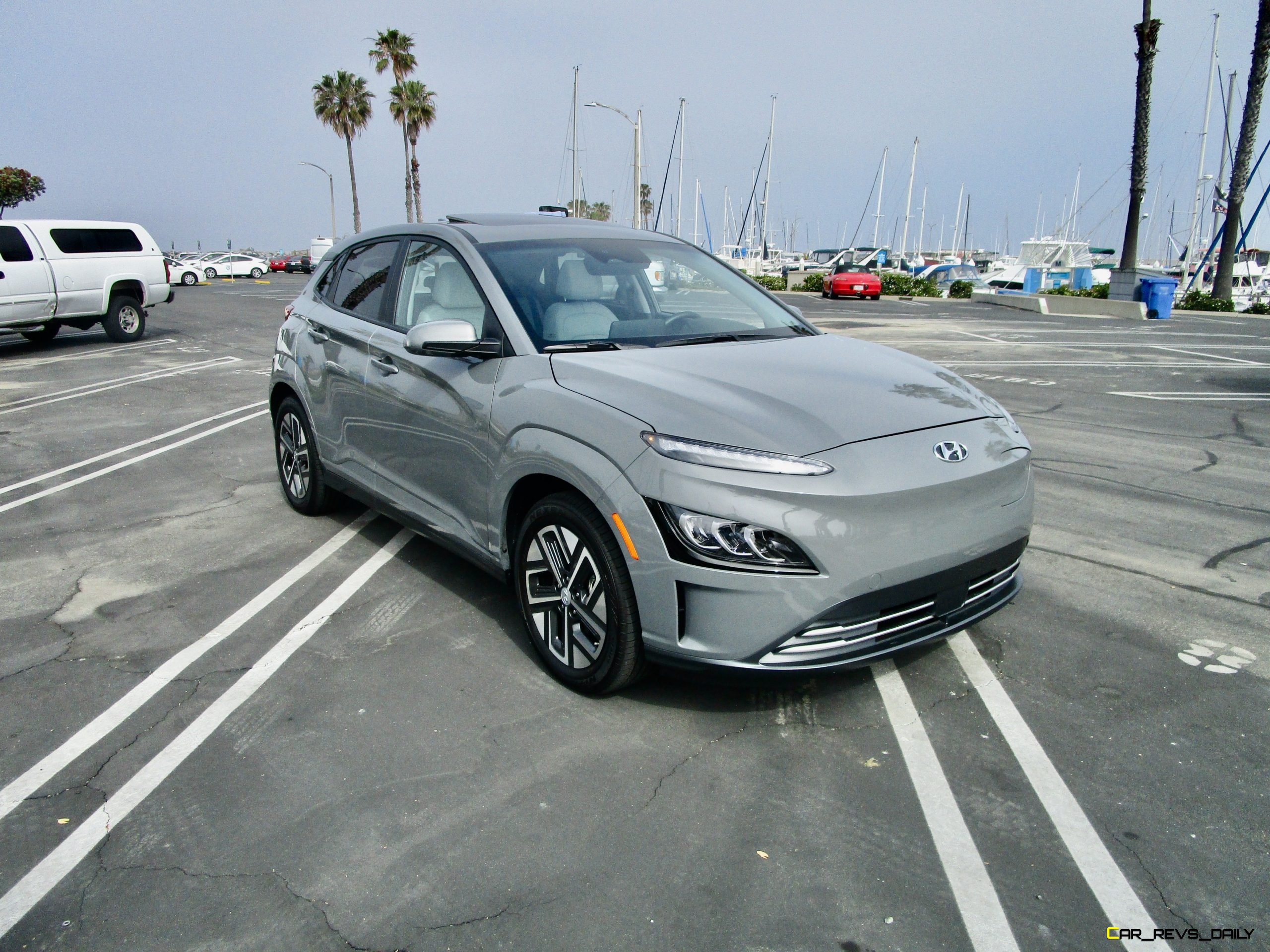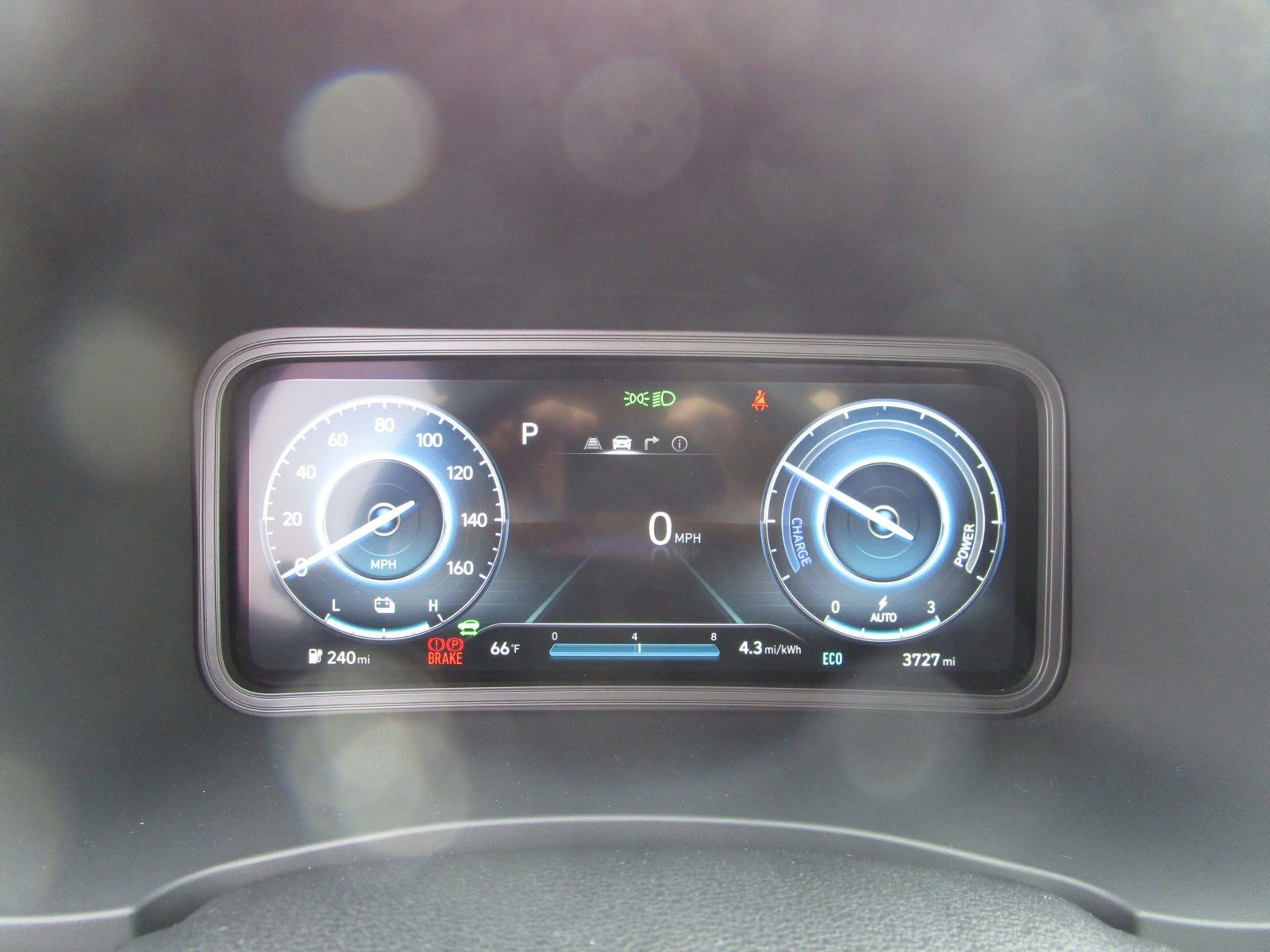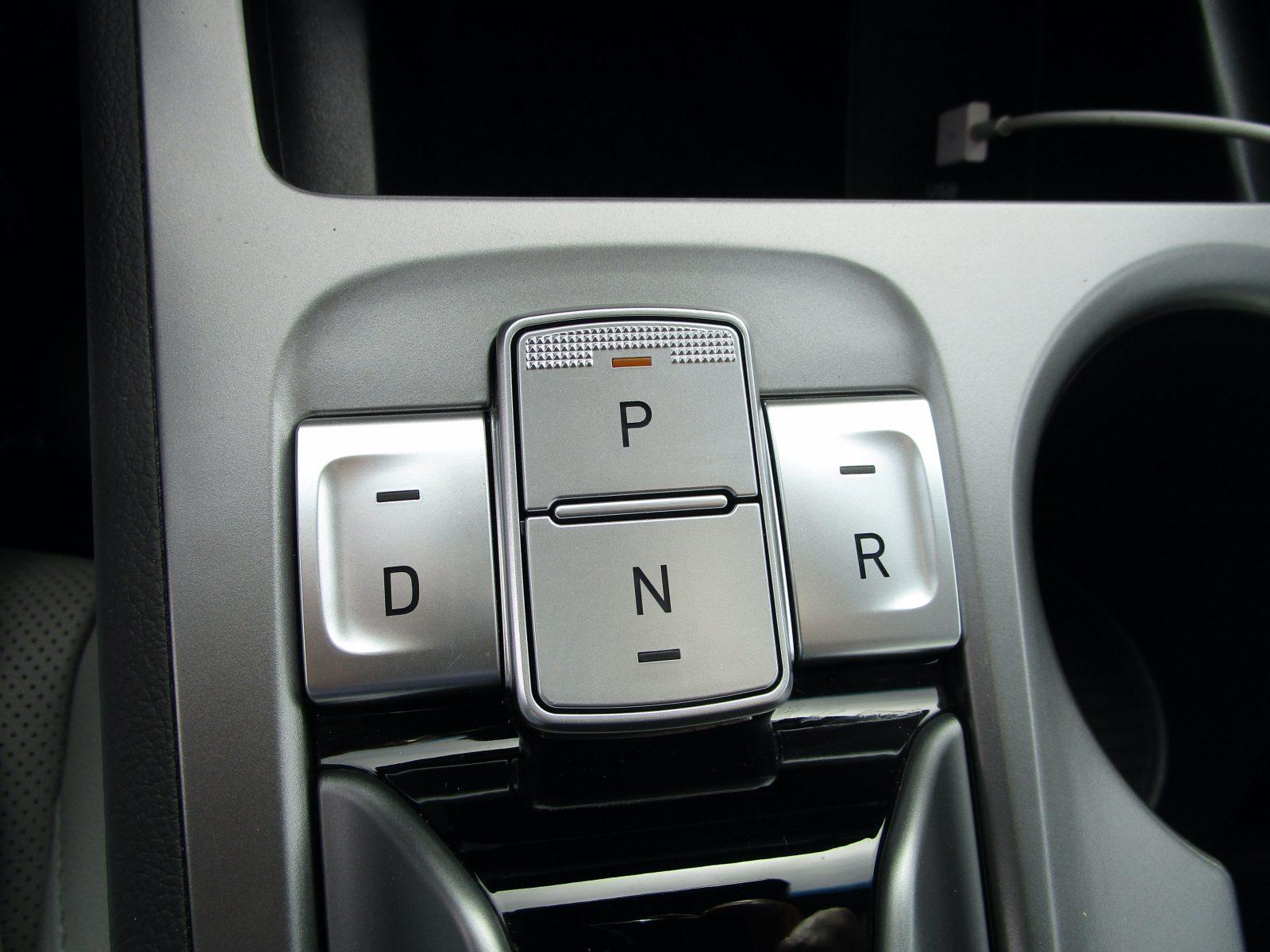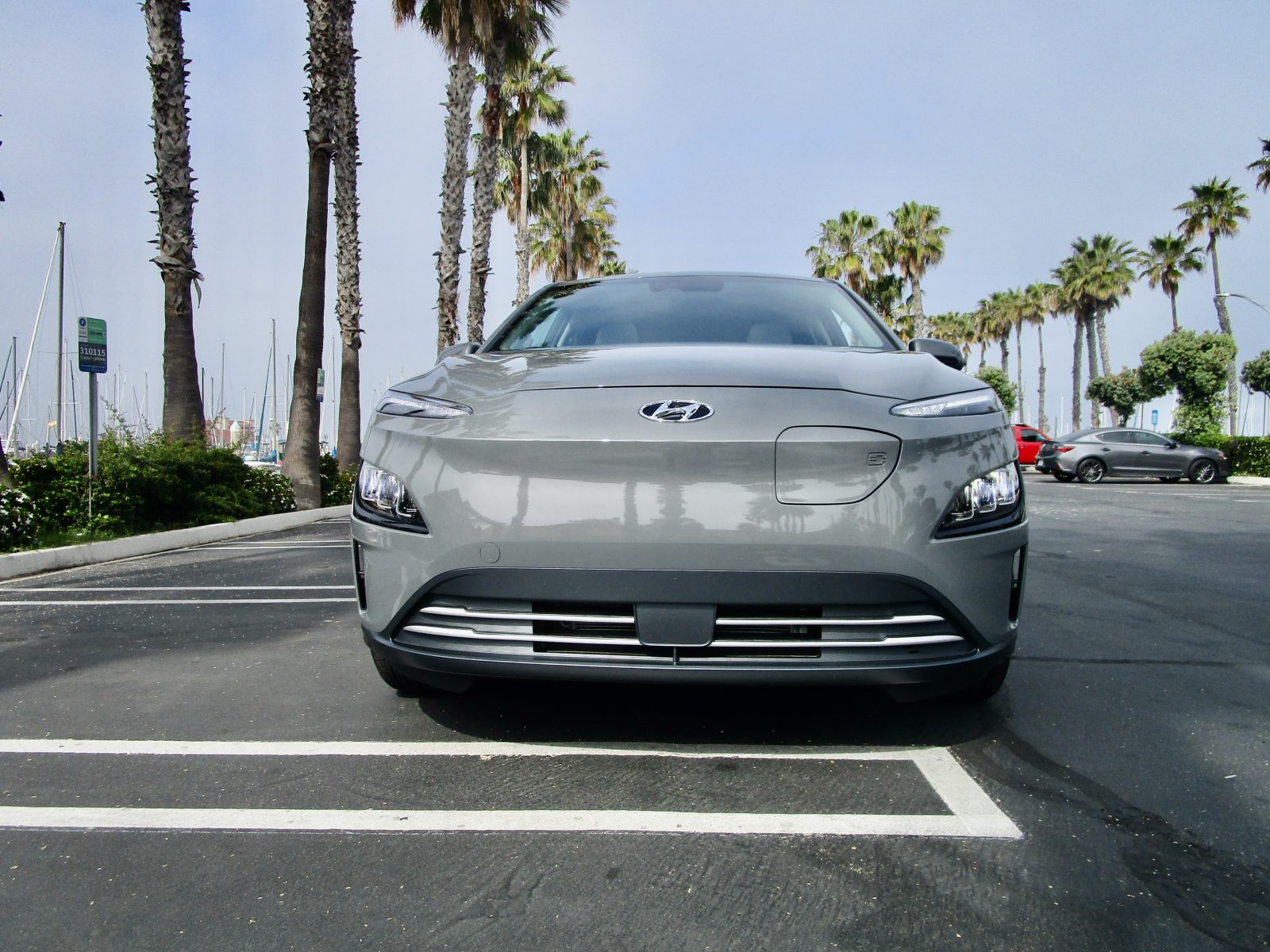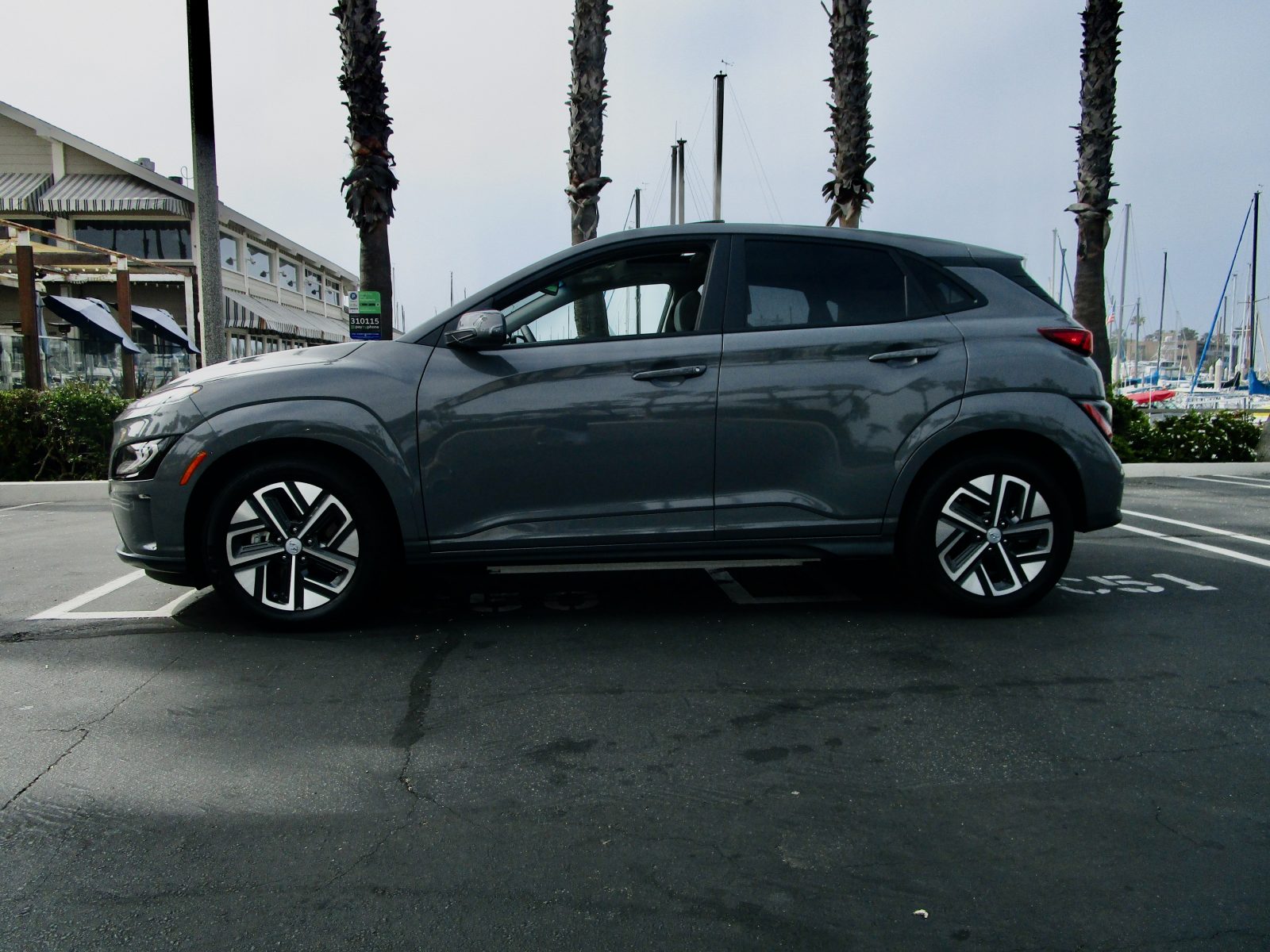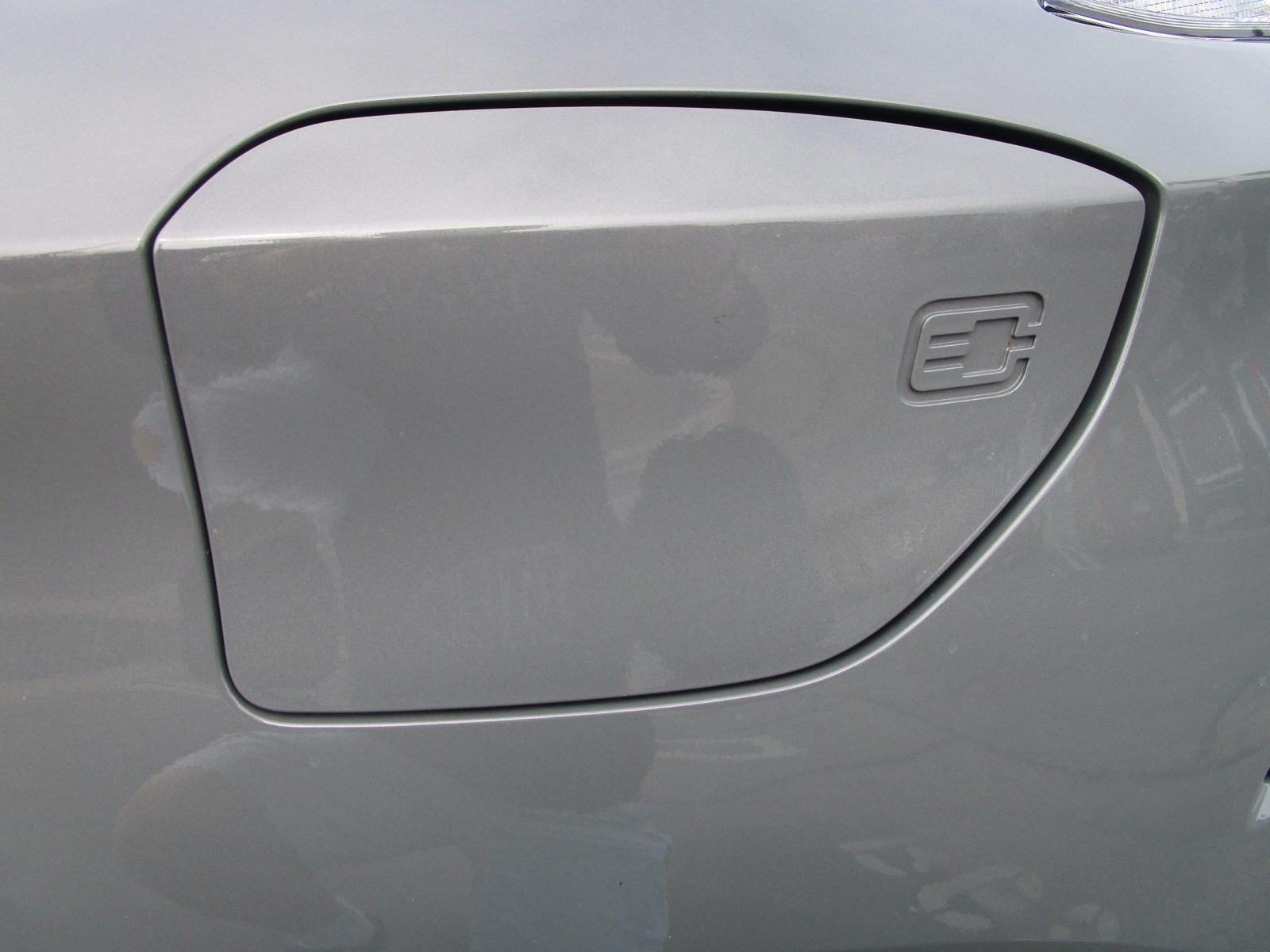Ok, maybe it’s the name but we always seem to be spending our holidays in Kona. The Hyundai Kona, that is. Last year we spent Xmas with the new 2022 Kona Limited, and now we’re spending Memorial Day with the Kona Electric.
We’ve always been fans of the Kona – a very sporty small crossover, especially with the powerful 1.6-liter turbo engine. So, we wondered, would we still love it with a full EV powertrain? Let’s find out!
Sporty but Unique
At first glance, you know this is a Kona. That’s good, we love the expressive style, especially with the facelift the model got for 2022.
Like the other Konas, you’ve got new LED running lights that look slimmer and meaner, but on the EV, you lose the large grille for a smooth nose that also houses the flip-out panel to access the charging point. Like our previous tester, the Hyundai logo has moved above and now sits on the longer hood.
The profile remains a combination of cute and chunky, with a more pronounced shoulder line that gives some visual muscle. Instead of the blacked-out overfenders, the Limited features body-color flares that look a bit more uniform and upscale. The “throwing star” style, 17-inch alloy wheels give a sporty and stylish touch.
The rear gets a nice redo as well, with cleaned up LED rear taillights, while a lower body-color fascia gives some added visual width, and makes the Kona look a bit more hunkered down.
And of course, since it’s an EV, there’s no tailpipe! We thought our tester’s Galactic Gray gave off an upscale vibe, but you also have a choice of other colors with fun names. Ultra Black, Lunar White, Blue Wave, Pulse Red or Cactus Fern anyone?
Fresh and Futuristic
Inside, the Kona Electric gets the same upgrades that made our previous tester so nice.
Open the door, and you settle into heated and ventilated leather seats, with a power lumbar support for the driver. Comfy. There’s a very elegant feel to the interior, with silver-tone controls and a two-tone effect that is soothing and stylish. The large turbine-style vents on the dash also give off a European vibe.
In front of you is a 10.25-inch digital dash, that is simple and tasteful with clear graphics. Giving you a little to show off to your friends, it changes colors from a cool blue in Eco mode to a light silver in Normal to a sporty red in Sport mode.
You also get a handsome 10.25-inch info-tainment display, that serves up all sorts of key data from navigation including nearest charging stations, to a somewhat silly ambient display that serves up images and sound effects, like Lively Forest and Calm Sea Waves. Ok, it makes us smile…
You do get standard Apple CarPlay and Android Auto with the system, but it is a little mystifying that on the lower trims with a smaller screen, you can get wireless CarPlay and Android, but not here. The Limited does have wireless charging, but without wireless connectivity, you’re still stuck plugging in. Harumph, we say.
There’s no harumphing the Harmon Kardon Audio system, which sounds great, and you feel pretty spoiled with everything from a heated, leather-wrapped steering wheel to power moonroof, dual-zone AC, and available Digital Key which gives you smartphone access so you can leave your phone at home.
We should also point out that Hyundai’s Bluelink Info-tainment and telematics is one of our favorite systems, with a quick handshake to your device, easy use, and simple interface.
We found the rear seats comfortable for two adults if they are under 6-feet tall. Luggage space is adequate with the rears up, and they fold easily to give you a spacious cargo hold. A reminder though, while it is competitive in its set, this is not a large vehicle. If you need more rear seat room or cargo space, you might want to look at the larger Hyundai Tucson.
The Electric Glide
So, here’s where you really see a difference from the turbo 4-cylinder model that we love. Powering the electric is a 201-horsepower electric motor with a 64-kWh lithium-ion battery. If that hp number sounds good, consider that you also get a mountainous 291 lb.-ft. of torque off the line. All this power goes through the front wheels (no AWD available, sorry) making it just about a dead heat with the very quick 195-hp, 1.6-liter turbo 4-cylinder.
The difference of course is the way it accelerates – silent, smooth, and you just glide away while the Kona pushes your back into the seat. It’s great fun! Now if you are going to drive like an e-maniac, you won’t get maximum range, which Hyundai says is 258 miles. That’s plenty to cure just about anyone’s range anxiety.
To enhance the efficiency, you can toggle the regenerative braking through the Kona’s paddle shifters. Use the maximum amount setting and you are close to one-pedal driving, with a strong braking action as you back off the accelerator – helping to put charge back in the system. It will even come to a full stop without stepping on the brake pedal. Neat.
When you do have to charge, you can go from 10 to 80 percent charge in approximately 47 minutes using a Level-III fast charge. Using Level-II charging you’re looking 10 to 100 percent in about 9 hours and 15 minutes – perfect for the overnight.
If you live where winter is blustery, a battery warmer system helps prevent excessively long battery-charging intervals in cold temperatures. In addition, in Winter Mode, the battery warmer can minimize battery-power losses due to low winter temperatures.
Here in SoCal where the weather is warm and the roads are twisty, we found the Kona Electric with its small size and responsive chassis a delight slicing and dicing through traffic, and fun on a curvy road. Like the gas-powered Kona, it’s a surprisingly fun small crossover to drive.
Is the Kona Electric Worth the Charge?
Let’s do the math! The Kona Electric SEL starts at $34,000. But like most EV’s, there’s strong incentives that make it even more affordable. Going by Hyundai’s website, it shows that there is up to $7,500 potential federal tax credit, plus up to $2,000 for those of us in California. Now compare that with the lower-end Kona SEL gas model with 147 horsepower starting at $23,100 and you can see what a great deal the Electric is.
Our tester was the loaded to the gills Electric Limited, and started at $42,500. Add in $1,245 for Destination, and we rang the bell at $43,745. Loading up a Kona Limited with the 1.6-liter turbo 4-cylinder comes in at $29,845. So, with the rebates you are still paying a few grand more. But we have to point out that while electricity isn’t cheap right now, gas prices are startling high.
Competitors would include the Nissan LEAF Plus at $38,4255, which is more car-like than SUV, but a nice vehicle to dive. The Kona’s sibling Kia Niro Ev, is a bit larger, and also a bit more expensive at $47,155, The same can be said about the stylish VW ID.4 ($46,445)
We came away impressed with the Hyundai Kona Electric. We love it just as much as the 1.6-liter turbo 4-cylinder. They are both great fun to drive, and we’d recco you test-drive both and choose what you like best.
Powerful, quick, and stylish, the 2022 Hyundai Kona Electric shows that EV’s can be great fun to drive, affordable, and eco-friendly at the same time.

Ben Lewis grew up in Chicago, and after spending his formative years driving sideways in the winter – often intentionally – moved to sunny Southern California. He now enjoys sunny weather year-round — whether it is autocross driving, aerobatics, and learning to surf.

